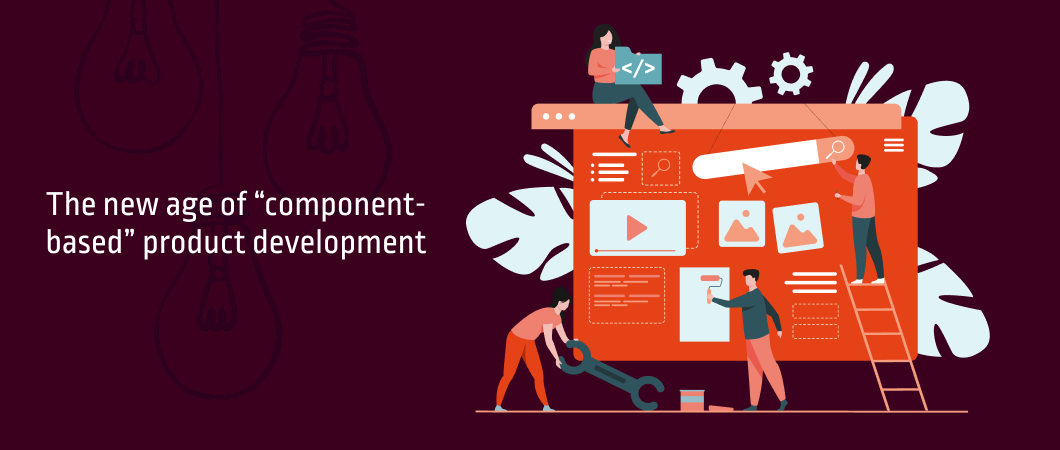The fact that all product owners yearn for “feature-rich” products has caused many a product development team to spend massive man-hours in building a meg-product. Obviously, while a massive directory of features delivers some bragging rights, building these features doesn’t come cheap – or easy.
The complications of building enterprise products laden with features that are minimally used are quite immense. This is why I believe now might be the right time to get minimalistic and remove features from your enterprise products.
Read on to know why!
The pressure to include a massive number of features is widespread
Ok, I understand why we feel the urge to add to the ever-growing feature list. The competition in the software development industry has become so severe these last few years, that organizations big and small are all struggling to get noticed. Since modern users expect products to have the latest and most innovative features, companies rush to include new capabilities to achieve one of these three goals:
- To get the first-mover advantage and outdo the competition
- To meet the evolving demands of existing customers, and
- To create an impact or make a difference in an already saturated market
But my view is, this may be more trouble than it’s worth.
But building these features brings with it an assortment of problems
The rush to add new features (within constrained timeframes) brings with it the need to cut corners; since there is not enough time to go through all the steps, features are launched in haste. The “launch first, figure out later” model gets them no result; the time that is normally needed to understand the market and understand if the features being considered are essential is dramatically reduced.
The assumption that adding a handful of exciting features – even without proper planning, research, or due diligence – will be enough to attract new customers while retaining existing customers is wrong at many levels!
At the best of times, enterprise products are laden with features that are minimally used. But building those features are not only time-consuming; they also cost money. Also,
- They add to the overall development and testing effort: Including a laundry-list of features into your product might seem like a good way to wow your customers. But this adds to the overall development and testing effort; each feature that you plan to build requires substantial planning, resources, time, cost, and effort – leading to exhaustion in the long run.
- They tend to bump up the resource requirements: Adding fancy features into your product is not just about adding a few lines of code; it consumes a large number of skills and resources: right from programmers to architects, program managers to project leads, database administrators to QA engineers, designers to testers, and more. They also demand greater resources to run and for the user to use!
- They make the product more complex and less usable: Constantly adding new features into your product tends to make the product extremely complex. Such complexity makes the user interface extremely sloppy and cumbersome – and thus less usable.
- They cause the product architecture to be over-engineered: Introducing new features into your product might be necessary to keep up with the times; but when done too frequently and without sufficient planning, it can cause the product architecture to be over-engineered. In the long run, this would cause problems in testing, integration, carried over technical debt, and security.
- They add to training and documentation effort: Integrating a long list of features into your product also has a great impact on some key support tasks like training and documentation. Each feature that has been incorporated has to be documented; and if the feature is too complex, users also have to be trained on how best to leverage it – which adds to the overall effort.
The time for minimalism has come!
In my opinion, the age of widespread remote working has made many new features unnecessary burdens to carry. Today’s remote workers need access to products that are resource-light, highly usable, and intuitive; they need products that offer a handful of important capabilities – enough to help them do their jobs. And not a complex, highly intricate product with too many features that look shoddy, are difficult to use, and add no value.
To me, this means that it’s time for product managers to only focus on features that are “must-haves” and strip those that are “good to have” that don’t offer direct and immediate value to users. Such an approach will not only help teams release fast; it will also help them to evolve and grow at a consistent rate. Concepts such as essentialism, adding by subtraction, or UI suppression in an otherwise good product are all great ways to build better products, improve usability, and achieve higher revenue.
Such approaches that involve doing less but better are what teams today need; they need to focus on the right things, in the right way, at the right time. They need to regain control over their choices about what features are essential and what aspects of the product need the most energy and focus – rather than allowing surrounding circumstances to lead important product decisions.
Today, more than ever, less is more. So, channel your time, energy, and efforts in areas that contribute the maximum to goals and activities that matter. Let enterprise products allow users to do exactly what they need and then evolve out from there. It’s time to drop some features from that list.



